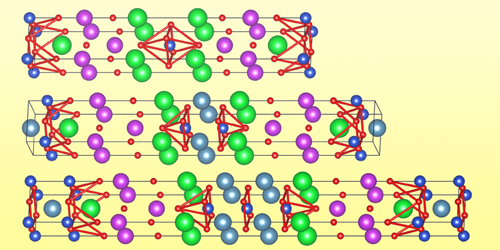Squeezing Superconductors
How electrons pair in cuprate superconductors depends, in part, on the crystalline landscape the electrons occupy. That landscape can be altered by applying pressure, which in turn causes the critical temperature (Tc) in some cuprates to rise, fall, and rise again as the pressure grows. But are the changes in Tc due to the atoms being pressed into a new crystalline structure or just being squeezed closer together? Experimental evidence is contradictory. To resolve the question, Alexander Mark of the University of Illinois Chicago and his collaborators performed experiments on the three members of the BSCCO family of cuprates [1]. They showed that the pressure-induced shifts in Tc coincide with changes in how the materials compress, which in turn reflect changes in electronic structure.
The high-pressure experiments on the superconductors were done in diamond anvil cells. The possibility of conflicting results arises from how the crystals respond to inhomogeneities in the compression environment. If the crystal experiences shear, the pressure–Tc relationship can be obscured. To remove this effect, Mark and his collaborators suspended the BSCCO crystals in neon inside the sample chambers of the anvil cells. They used x-ray diffraction to track structural changes as they increased the pressure.
The researchers found that the BSCCO crystals retained their orthorhombic structure up to the highest pressure they applied, 155 gigapascals. They also found that a standard equation for a crystal’s volume as a function of pressure worked only if they split their data into different regimes above and below a critical pressure. What’s more, the critical pressures tracked the inflection points in the pressure dependence of Tc associated with changes in electronic structure. Identifying the nature of these changes could yield insights into practical ways of raising Tc.
–Charles Day
Charles Day is a Senior Editor for Physics Magazine.
References
- A. C. Mark et al., “Structure and equation of state of Bi2Sr2Can−1CunO2n+4+𝛿 from x-ray diffraction to megabar pressures,” Phys. Rev. Mater. 7, 064803 (2023).




